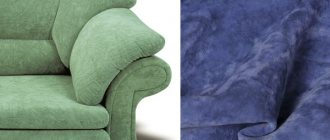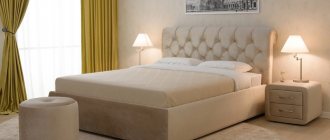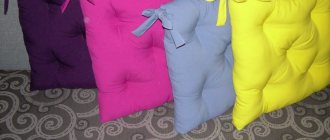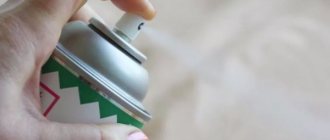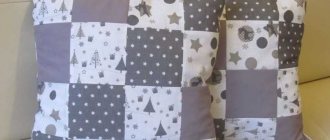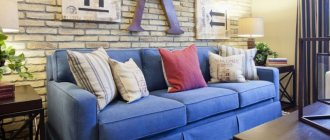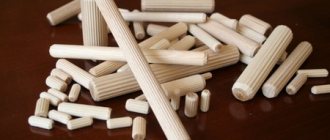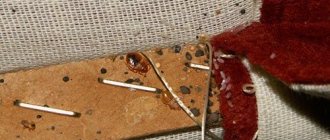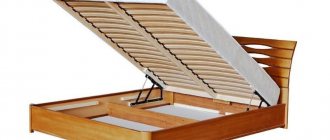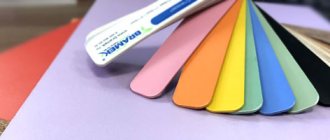If you want your pillow to last for many years, choose the right fabric for the pillowcase. It is a cover that holds the filler inside, preventing it from caking and causing discomfort to human skin. The pillowcase is also called an intermediate pillowcase. Listed below are the pros and cons of fabrics that are often used when sewing pillows.
General tips for choosing pillow fabric
To ensure that your favorite pillow lasts as long as possible, it is covered with a pillowcase. The choice of fabric directly depends on the purpose of the household item.
The most necessary tips:
- pillows used for sleeping are covered in covers that are soft and pleasant to the skin (cotton, linen, silk pillowcases);
- fabric for decorative pillows is used with a strong structure that is resistant to wear (teak, satin, jacquard, twill, percale, cambric).
For delicate and soft filling, choose thin fabric for pillows. Down products are an exception. Dense material should not allow fluff and feathers to pass through, remaining durable. It is cotton teak that has these characteristics.
Modern interior
To choose the right fabric for a pillowcase for a wool product, you need to take into account the breathability and thermal conductivity of the fabric. In this case, cotton will be the ideal material for a pillowcase.
Silk bedding can be covered with satin covers, and microfiber pillowcases made from natural fabrics.
Sofa cushions are designed for long-term use, so the durability of the material is taken into account. Upholstery fabrics in the form of fleece, faux suede, fur or velor can create comfort and ease in the elements used in the interior of the room.
Attention! Fabric for sofa cushions is chosen taking into account the combination of colors of furniture, curtains, paintings and floor coverings. The modern style of products decides a lot in the design of a home.
Variety of colors
Fabric characteristics
The type of thread weaving is the most important indicator of the type of material.
Note! The quality characteristics of fabrics differ depending on the composition of the thread and the strength of the fibers.
Differences:
- Teak, made from cotton or linen, is wear-resistant and durable. Teak pillowcases hold their shape well and have water-repellent properties.
- Smooth satin is a soft material that hardly wrinkles and adapts well to the desired body shape. Excellent ventilation properties allow the scalp to breathe during hot periods.
- Satin jacquard is distinguished by its beauty and sophistication. Elegant pillows look harmonious on the bed and on the sofa.
- Twill makes the interior item elastic and voluminous. The fabric is soft to the touch and quite strong and dense.
- Percale is one of the best linen fabrics. The soft and wear-resistant material can be easily painted in bright colors, delighting the eyes with multi-colored pillows.
- Batiste is made from the finest threads of cotton and is used for airy down pillows. The range of such products is used for infants and allergy sufferers, people with sensitive skin.
- Cotton is the most inexpensive of the non-allergenic fabrics. The material is easy to care for.
- Linen is ideal for use in hot weather. The surface of the fabric slightly cools the skin when in contact with the pillowcase.
- Silk remains soft at any time of the year. Pleasant to the touch like royal material, it requires appropriate care.
- Wool with a “dry heat” effect relieves ailments, relieves muscle, headache and toothache. Requires special care. The fabric is prone to shrinkage.
You might be interested in Using paints for suede and its varieties: blue and others
Decorative pillow
How to choose fabric for a down pillow?
Cotton teak is usually used as a down-holding fabric - this fabric has the densest weave and a fairly thick thread. Feathers do not slip through the teak, and the dense fabric gives a good stable shape to the light down pillow. It is important that the fabric not only holds the down inside, but also prevents dust from getting into the pillow - washing a down product is not easy. Down-holding teak copes well with these tasks: tightly woven threads do not allow any fluff or dust to pass through. At the same time, like any other cotton fabric, teak is pleasant to the touch, hygroscopic and allows the skin to breathe.
Design and types of decorative pillows
The main purpose of a pillow has always been considered to support the head during sleep. Classic rectangular or square pillows are the most common products on the market.
The appearance of products of a specific configuration is associated with a therapeutic effect in diseases of osteochondrosis, scoliosis and after injuries to the musculoskeletal system. Correcting the position of the head and body during sleep brings certain benefits to those suffering from various ailments. Such pads are usually called orthopedic.
Decorative interior elements in the form of pillows of various shapes have already gained popularity and are widely used to decorate not only children's rooms and living rooms. Animals, flowers, rhombuses and hexagons, berries and leaves - this is not a complete set of forms of modern products.
Interesting! The non-standard purpose of items made from filler in a case is used as a travel item, a car accessory, to help a nursing mother, for a pregnant woman to sleep, a medicinal roller filled with medicinal herbs, a garden option.
Products for lining under the back and relieving pain in the lower back, as well as for legs with arthritis and varicose veins, are more like soft rugs than pillows. They are made in the form of horseshoes, bolsters and thin mattresses with fillings.
Orthopedic sleep product
What is used to stuff sofa cushions?
The padding is just as important for a sofa cushion, as is the fabric from which it is made. There are several dozen types of fillers that can be used to fill textiles. They differ in composition, degree of creasing, durability, and washability. How to choose the most suitable one? We invite you to familiarize yourself with the factors necessary for the correct selection.
- Purpose of use. If the pillow will serve only as a decorative element, there is no point in purchasing natural, expensive materials. It can be filled with budget padding polyester, advanced holofiber, or for rigidity and shape - with PU foam crumbs. If you want to have a universal cushion on which you can lie and decorate your sofa at the same time, use sheep wool, natural latex or silicone for stuffing.
- Hypoallergenic. Allergies, asthma, and other similar diseases of the upper respiratory tract do not allow you to take the choice of padding lightly, because it can provoke an unpleasant and even dangerous reaction. Be sure to keep in mind that natural fillers (down, feathers, sheep wool, herbal infusions to improve sleep) are allergenic; it is better to replace them with holofiber or comforter.
- Rigidity. For many people, this factor is of paramount importance, so we suggest dividing fillers by degree of hardness. So, natural latex, silk, and down will be soft and enveloping. More solid, with shape support - silicone, PU foam crumbs.
- Washable. If you are sewn a pillow without a cover, sooner or later you will need to wash it, but this cannot be done with every filler. Natural fillings do not tolerate large amounts of moisture and are damaged by it. Therefore, you can only wash a roller with synthetics - padding polyester, holofiber, silicone.
- Budget. A significant factor that directly influences the choice of filler. So, if funds are limited, you can use padding polyester - an inexpensive, moderately crumpling material, or experiment with natural, cheap cotton wool. But don't expect a long service life from it. If there are no budget restrictions, the above factors will help you decide on the necessary padding.
Deciding on the size of the pillow
Our grandmothers used large 70x70 duck down pillows that were arranged in pyramid shapes on their beds with muslin throws. Embossed patterned curtains to match the pattern on the pillowcases, marked with the same hand-made patterns.
The choice of a future wife was very often determined by her perseverance in needlework and her skill in inventing patterns in embroidery and embossing three-dimensional patterns in the cutwork style. Modern factory fabrics deprive the value of handmade work, surpassing the speed and quality of product manufacturing.
The most popular sizes of pillows for the bedroom are considered to be square with dimensions of 50×50 cm and rectangular 50×70 cm. The Euro standard of bed linen, brought to the domestic market, is dictated by the purchase of beds and furniture made to the sizes of European manufacturers. This factor significantly influences the choice of pillow size for sleeping.
Decorative items for the living room and nursery have non-standard shapes and arbitrary sizes. GOST and any standard have left the consumer market, dictating fashion trends towards the absence of a stamp and the manifestation of individuality in choice.
You might be interested in what fabrics are used to create outdoor curtains
Attention! The shape of an oval or circle can have any size. And armchairs with cushions or armchairs with balls are simply off the charts with their original personality.
European standard
How to sew a sleeping pillow with your own hands
A self-sewn pillow will meet all the requirements and will save money on buying a new one. We start sewing by preparing the necessary materials:
- fabric for a napkin;
- filler (sintepon or feathers);
- sewing threads;
- sewing machine.
Before you start sewing, you need to decide on the size of the pillow. You can make a standard size 70x70 or European - 70x50. Departing from the standards, the pillow can be of any size. The disadvantage of a non-standard pillow is that you will need to sew pillowcases yourself; store-bought ones will not work.
How to stuff a decorative pillow with your own hands
The filling of a pillow depends on who will sleep on it. Down, feather filling, synthetic wool, bird feathers, padding polyester or holofiber are commonly used fillers.
Non-standard components may include medicinal herbal infusions, hop cones, and buckwheat husks. The shelf life of this filler is short-lived and equals 1 year. The therapeutic effect gradually decreases and using such a pillow will not be beneficial.
The use of textile fiber or animal wool is possible with constant beating of the contents, because it tends to clump.
Fillers with therapeutic effect
How to choose fabric for a synthetic pillow (microfiber pillow)?
Microfiber is a soft and elastic filler; it holds its shape perfectly on its own, so it does not need the “help” of the cover. Microfiber does not “climb” through the fabric, so you can choose a material of any weave: loose calico, smooth satin, poplin, dense teak, pliable knitwear - the pillow will perfectly retain its shape in any fabric! When choosing a composition, it is better to give preference to natural fabrics - made from cotton or containing cotton. The cover can also be synthetic: microfiber or polycotton fabric has a soft surface, unpretentiousness and the most attractive price.
Pillow cushions: manufacturing diagram
Fabric for napkins - what is it called? It all depends on the required quality and composition. You can choose from popular ones:
- batiste;
- percale;
- satin;
- Jacquard, named after its inventor Joseph Marie Jacquard.
A pattern for sewing a pillowcase or bedspread is usually not used if it is square in shape. To make several products of the same size, the cut blank is placed on the next section of fabric and the future part is cut out from it. The pattern will be the form itself made from the material.
The principle of preparing a pattern is to apply two squares the size of the pillow onto the fabric with a piece of chalk or soap. There is no distance between them; they merge into one rectangle. For the inner flap of the pillowcase without using fasteners and zippers, add another third of the square in width. This part of the product will hide the end of the pillow.
Important! For side seams it is necessary to leave 1-2 cm, this factor depends on the structure and thickness of the fabric.
The sequence consists of processing the end edges of the pillowcase, one of which will remain outside the product. Then the products are folded according to the size of the pillow into a square shape and the connected parts of the pillowcase are processed. The pillowcase turned inside out is ready.
Pillowcase pattern
If a zipper is sewn from the end part, then there is no need to leave an allowance for the lapel. Ideal two squares with a sewn-in zipper are processed on three sides of the perimeter.
The division of a pillowcase into two separate parts occurs only if fabrics of different colors or textures are used for sewing the sides. Sometimes a decorative item for a sofa has a front part trimmed with embroidery or other decorative elements.
You may be interested in: What types of ceiling fabrics for cars are there?
Scented pillowcase
Consumables and tools
What will be useful:
- A piece of fabric or a combination of several materials in one product.
- Sewing machine (sometimes decorative items are made by hand).
- Sewing threads of matching color (you can use thin fishing line, office thread for stitching documents).
- Tape divided into centimeters.
- Chalk or thin dried piece of soap, fabric marker.
- Cutter's scissors.
- Safety pins or clips to hold pieces of fabric in position.
- Zipper (if needed).
Sewing tools
Sewing technology
The most important thing in sewing a bedspread or pillowcase is the correct calculation of the required fabric. If in doubt, you can first calculate the consumption on paper and draw the shape of the future product in a reduced size.
Experienced cutters place templates from the edge of the fabric so that as little fabric as possible is used for trimming. The width of industrially produced fabric has sizes of 80, 120 and 150 cm. Less common are 220 and 145 cm.
When using cotton materials, take into account the shrinkage of the fabric after washing, leaving allowances around the perimeter of the product.
Inexperienced seamstresses are recommended to sew their first items from leftover fabric or some items not used for their intended purpose. The fabric for the cushions on the sofa can be selected from paita, which has become out of fashion or a damaged bedspread, or an old favorite curtain. Applying a design or embroidery before making a product. Combining red and turquoise colors, this activity is called anti-stress. Doing decorative finishing by hand is beneficial for pregnant women.
Combined sofa cushions
Maternity pillow
Maternity pillows usually have the shape of an elongated horseshoe. It is convenient for women with already large bellies to sleep on them, since the body seems to be “enveloped” by a soft filler, and it completely relaxes. In this case, the pillow can be laid out as you like. In its normal state it is a long roller. To make such a part you will need a lot of hypoallergenic filler and a good piece of natural fabric that is pleasant to the body. Sizes are selected individually, based on the woman’s body characteristics.
Care
The accumulation of dirt and grease in pillows can gradually lead to allergic reactions. Linen mites, fungi and pathogenic bacteria that cause attacks of bronchial asthma, rashes on the face in the form of acne, must be destroyed by periodic processing of products.
Washing pillows is recommended 2-3 times a year. Change the nappers at least once a year for a new one. Keeping the bedstead clean can increase its service life and reduce the risk of disease to a minimum.
Product care
Schoolchildren can sew their own napkins and pillowcases. There are no special secrets to cutting and sewing. You can hone your skills at home, starting with simple pillowcases and moving on to making decorative pillows for the living room.
Variety of species
The creative impulse should never be put off until free time appears. You need to start when the fire is burning in your eyes, and your hands want to do things. Any room can be transformed with decorative pillows. Also, it is worth noting that pillows are intended not only for a comfortable sleep, but also for medical reasons.
Crocheted and knitted pillows: ideas, photos, patterns
The ability to crochet or knit makes it possible to make beautiful pillow covers with your own hands. Beautiful patterns will create a unique design and make the room cozy.
Various knitting patterns are used to knit cushion covers. These can be openwork patterns, crocheting from motifs, knitting or purling with knitting needles.
You can also knit pillows of various shapes, for example, in the form of animals, different geometric shapes, etc.
Cushion covers can be knitted from leftover yarn. If you have a lot of little colorful balls and you don't know where to put them, cushion covers are a good idea for usefully recycling leftover yarn.
Let's look at some crochet cover ideas.
One of the simplest and most common patterns is granny square . These pillows are made in a retro style, reminiscent of the old days, when grandmothers could find many similar products in their houses.
Crochet pillow with granny square pattern
Below is a knitting pattern.
Scheme of the granny square pattern
Pillows with openwork patterns look romantic . These pillows will decorate any room. The intricate pattern does not require any additional decor; such pillows are beautiful in themselves. The pattern is called "pineapple". Below is a diagram, following which you can knit such a beautiful romantic pillow.
Crochet pillow cover with openwork pattern
Knitting pattern for an openwork crochet pillow cover
The next pillow is knitted with a flower pattern. For experienced knitters, knitting such a cover will not be a problem. Looks impressive.
Crochet pillow with knitting pattern
You can also knit simple but beautiful cushion covers with knitting needles. Cable patterns are a classic pattern that never goes out of style. The braid pattern can be found not only on knitted sweaters, scarves, but also on pillows. A well-chosen tone of thread for the pillow will make the interior luxurious.
DIY pillows
Knitted pillowcases with knitting needles: braid pattern
Knitted pillowcases for pillows
Below are patterns for knitting patterns with braids.
Knitting pattern with braids
Braid patterns: patterns
Knitting patterns with braids with patterns
You can also knit openwork patterns, checkerboard stitches and other patterns with knitting needles. Pillows in the form of a cushion look original. Knitted pillows are most appropriate in the winter season; they will warm you with their warmth and give a cozy atmosphere to your home.
DIY pillows: knitted covers
Knitted pillow: checkerboard pattern
DIY bolster pillow
You can learn more about DIY knitted pillows here.
DIY pillows from old clothes: ideas, photos
Important: Knitted textures in the interior are a fashionable Scandinavian trend. If you don't know how to knit, don't worry. There is a very simple way to decorate your home with fashionable knitted pillows.
For this you will need old sweaters or openwork blouses. If you haven't worn these items for a long time, give them a chance for a second life. Making a beautiful cover from an old sweater is not at all difficult.
To do this you need to do the following:
- Measure the dimensions of the pillow.
- Transfer the measurements to the sweater.
- Trim off any excess, leaving a couple of cm for allowance.
- Then you should stitch the edges with a sewing machine.
- Sew a zipper into the pillowcase from the inside.
It is worth understanding that the pillowcase is made from the central part of the sweater, the sleeves and neck are cut off. You can make a pillow across the entire width of the sweater so that you can sew only two sides of the resulting pillowcase.
How to make a pillow from an old sweater
Look how beautiful pillows can be made from old clothes. In addition to knitted sweaters, other old things are suitable for creating pillowcases: cotton and denim shirts, T-shirts, bathrobes. The main thing is that the fabric looks fresh and is not worn out or worn out.
DIY pillows
DIY pillows from old clothes
Pillow made from old sweaters
If you decide to make a pillowcase from openwork clothing, take care of the lining in a suitable tone. Satin linings will look great. If you don't make a lining, the pillow will look so beautiful.
You can decorate a pillow from old shirts and sweaters with beautiful buttons. If the item has buttons, you can leave them on. But it is better to replace them with larger and more beautiful ones. Also, as a decoration, you can make a pocket in which it is convenient to put the TV remote control or mobile phone.
